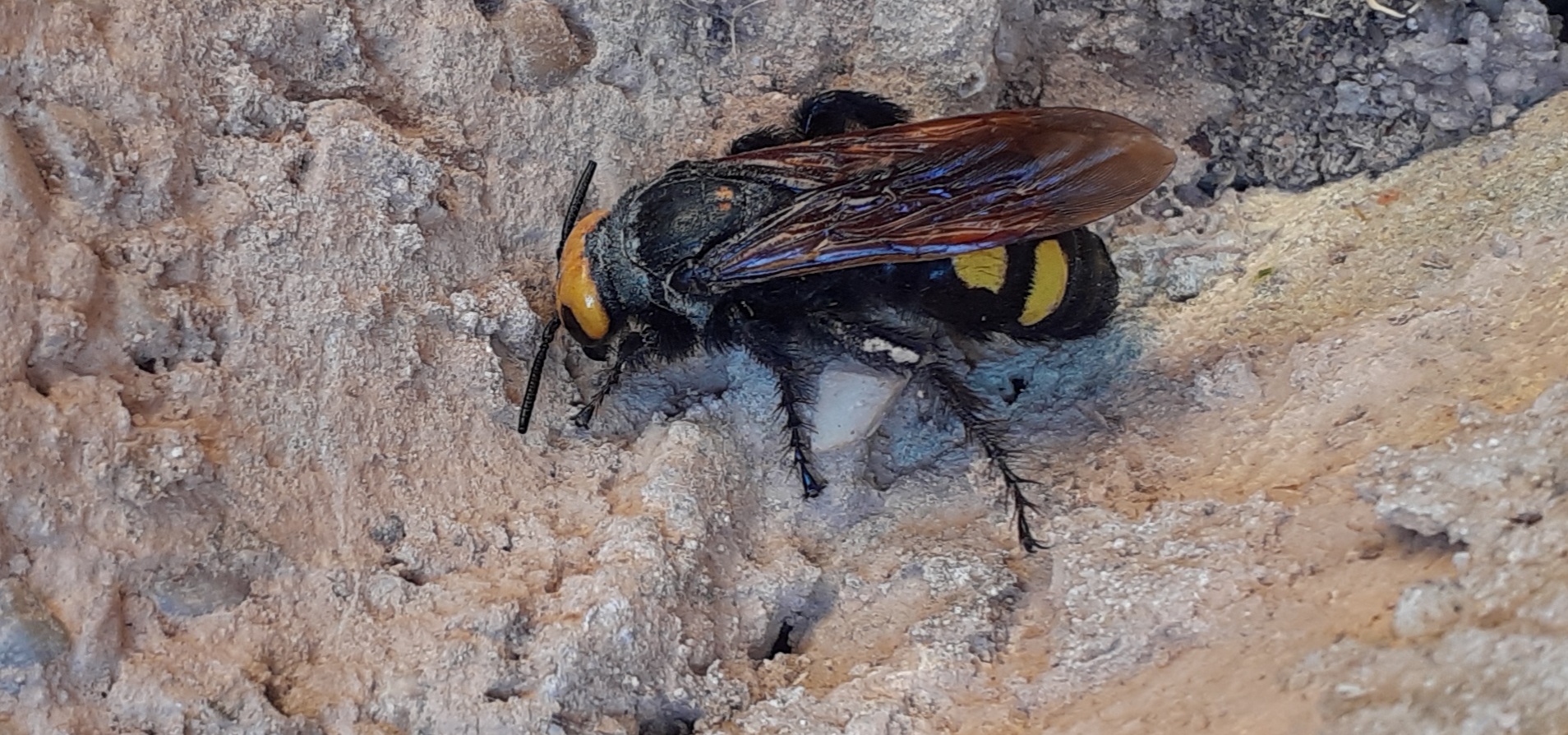By Andrew Atkinson Leader Exclusive
An Avispa mamut mammoth wasp – or dagger wasp – whose scientific name is Megascolia maculata flavifrons, the largest of the hymenoptera in Europe and the second largest in the world, has been found in Los Montesinos, Alicante.
Following the discovery of the wasp the Mayor of Los Montesinos Jose Manuel Butron was informed, who in turn acted quickly in calling the Policia local to attend the scene.
The huge wasp, found in La Herrada in the hamlet region of the Vega Baja, can be found throughout Spain territory. Its size is only surpassed by the giant deadly Asian hornets.
Initially it was thought to be a giant Asian hornet, with one of the Policia officers who attended the scene saying he had never seen one before in Los Montesinos.

There is little known about the mammoth wasp, although it is deemed one of the ‘jewels in the crown’ of Spanish insects. Its size varies and usually measures about 4-5 centimetres, and the female can measure up to 6 centimetres.
It is often called a hornet, leading to confusion with the European hornet, whose scientific name is Vespa crabro.
Its distribution covers central and southern Europe and also reaches the Middle East from Turkey to Iran, Syria, Lebanon and Israel.
The mammoth wasp is striking for its black colour, with four intense yellow spots on the abdomen. Its wings are also dark.
Females have a much more intense colour and have larger yellow spots on their heads.
Males of the species have much larger antennas than the females.
The mammoth wasp is not invasive, as is the Asian wasp.






Re Megascolia maculata. It is NOT dangerous & does NOT sting anything except its prey. Please do not scaremonger !
It is an important member of the Iberian fauna. As its prey, the Rhinoceros beetle occurs between San Miguel & Montesinos, Megascolia is likely to be found in the area. It would be entirely wrong to use sensationalism, as, alas, you have, to encourage people to fear this remarkable insect which needs protection and NOT the police. !